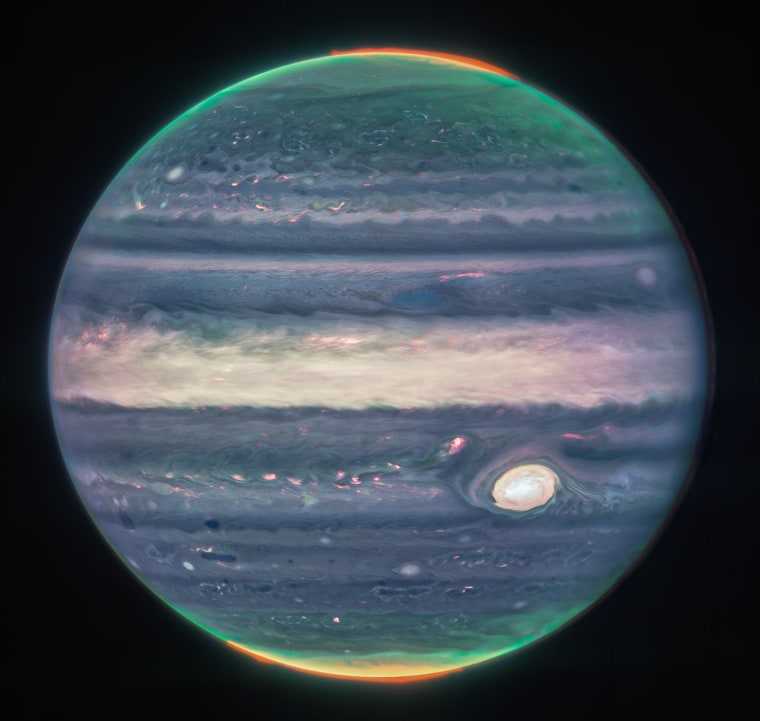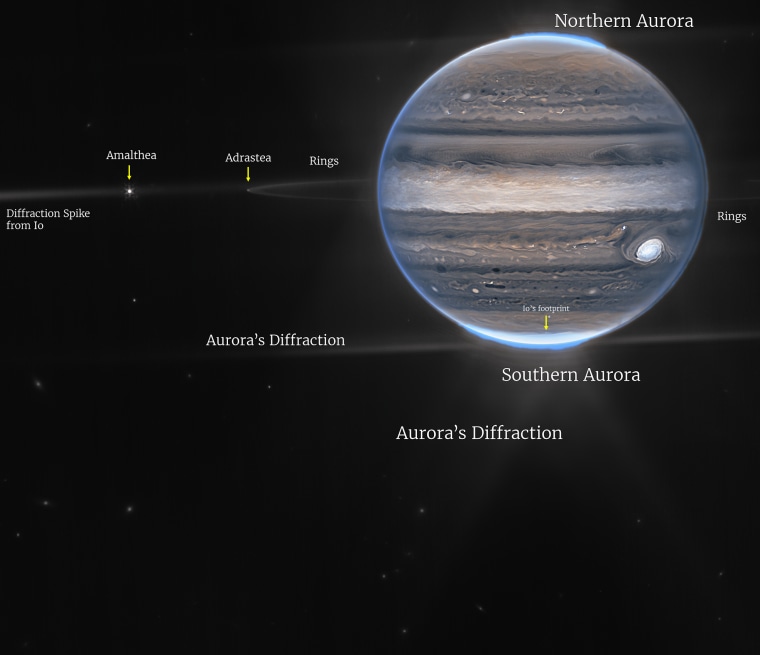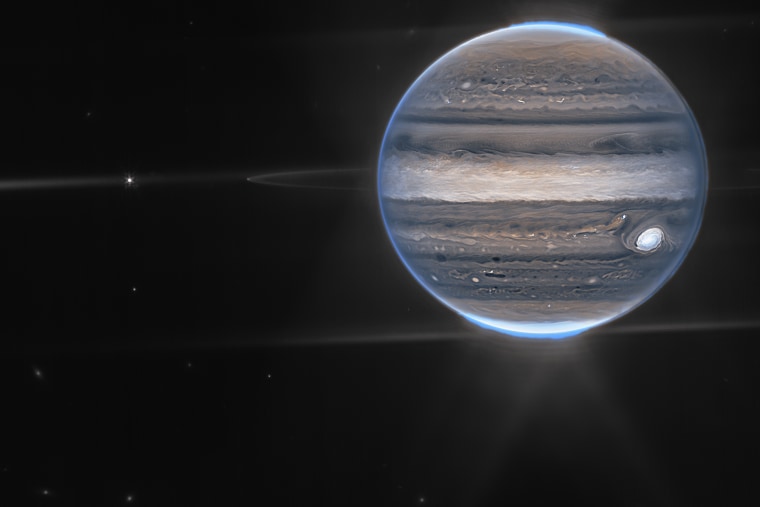In between spotting distant galaxy clusters, busy star-forming regions and never-before-seen cosmic features, NASA's James Webb Space Telescope has trained its eyes on a subject closer to home, capturing spectacular new views of auroras, giant storms and swirling clouds on Jupiter.
The images, released Monday by NASA, show our solar system's largest planet in stunning detail, providing a valuable glimpse of the inner workings of the gas giant.
Imke de Pater, an emeritus professor of astronomy at the University of California, Berkeley, said she was surprised by Webb's observations of Jupiter.
"We hadn’t really expected it to be this good, to be honest," de Pater, who led the observations of Jupiter with colleagues from the Paris Observatory, said in a statement.

The planet's signature Great Red Spot, a roiling storm so large it could engulf Earth, appears white in the images because it is reflecting sunlight. Also visible in the wide-field view are Jupiter's faint rings, which scientists say are a million times fainter than the planet itself, and two tiny moons named Amalthea and Adrastea.
The images show auroras extending to high altitudes at Jupiter’s northern and southern poles, the researchers said, adding that different infrared filters also captured clouds and hazy features on the planet. In the wide-field view, background galaxies appear as fuzzy smudges in the lower left of the frame, the scientists said.

"It's really remarkable that we can see details on Jupiter together with its rings, tiny satellites, and even galaxies in one image," de Pater said in the statement.
The views were captured by the Webb telescope's Near-Infrared Camera, which uses three infrared filters to see details that are undetectable to the human eye in visible light. The researchers worked with a California-based citizen scientist named Judy Schmidt to process data from the Webb observatory and turn those observations into images, complete with artificial coloring to highlight the planet's many features.
The $10 billion Webb telescope is designed to study the earliest stars and galaxies in the universe. Researchers have said that Webb could unlock mysteries from as far back as 100 million years after the Big Bang — observations that could help astronomers understand how the modern universe came to be.

